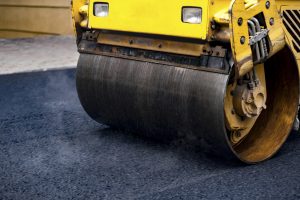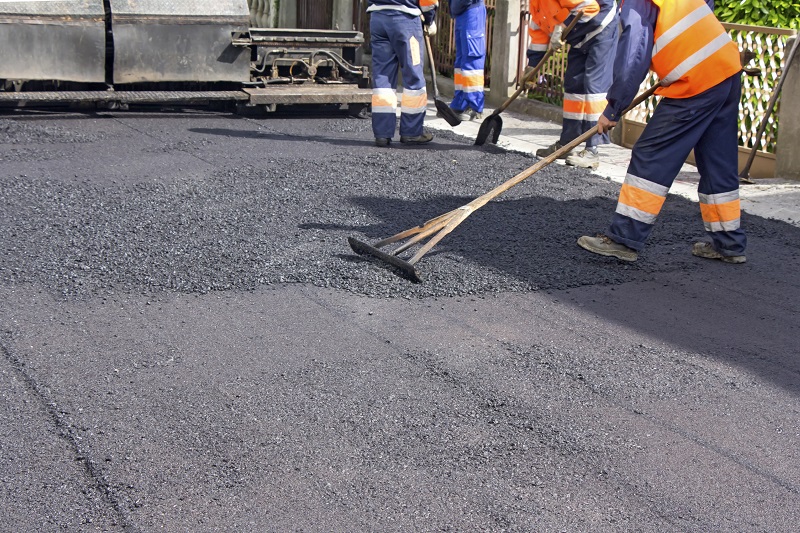Hot Mix Asphalt Paving: Your Entrance to Premium Angled Parking Solutions
Hot Mix Asphalt Paving: Your Entrance to Premium Angled Parking Solutions
Blog Article
Unlocking the Keys of Warm Mix Asphalt Innovation
Discovering the depths of hot mix asphalt modern technology discovers a world where specific formulations and precise processes assemble to shape our roads and facilities. The blend of binders, fillers, and aggregates isn't merely a building and construction task but a critical orchestration of resilience and efficiency. As we peer right into the elaborate dance of parts, a tapestry of strength and sustainability unravels. Yet what lies below this surface of asphaltic proficiency, and what tricks wait to be unveiled in the world of paving developments?
Importance of Hot Mix Asphalt
Warm Mix Asphalt plays a vital duty in contemporary infrastructure advancement due to its toughness and cost-effectiveness. As the most frequently made use of leading material for roads, highways, and parking area, Warm Mix Asphalt supplies a variety of advantages that add to its importance in building projects. One crucial benefit is its ability to withstand hefty website traffic loads and rough weather, offering a reputable and long-lasting surface for transport networks. Additionally, Warm Mix Asphalt is affordable in both first construction and long-lasting upkeep, making it a recommended choice for numerous infrastructure tasks.
The durability of Hot Mix Asphalt stems from its make-up, which includes aggregates, binder, and filler materials that are meticulously chosen and mixed to satisfy particular efficiency needs. Overall, the relevance of Warm Mix Asphalt in facilities advancement can not be downplayed, as it continues to be a cornerstone of contemporary building methods.
Parts of Asphalt Mixes
The composition of asphalt blends consists of meticulously picked accumulations, binder, and filler materials that are essential for accomplishing details performance requirements. Accumulations are the key element of asphalt mixes, supplying strength and stability. These aggregates can be all-natural, such as crushed rock or crushed stone, or synthetic, like recycled products from old pavements. The binder, usually asphalt or asphalt concrete, holds the accumulations with each other and gives versatility and toughness to the mix. The selection of the binder is essential as it directly influences the mix's performance in different weather. Fillers, such as moisturized lime or Rose city concrete, are made use of to enhance the mix's workability and aging resistance. Angled Parking.
The mix and proportion of these elements play a substantial function in identifying the high quality and performance of the asphalt mix. Designers meticulously develop the mix to fulfill particular needs, thinking about elements like website traffic quantity, climate conditions, and sidewalk life-span. Appropriate selection and harmonizing of aggregates, binder, and fillers are important for developing durable, resilient asphalt sidewalks.
Mixing and Production Methods

As soon as the aggregates are picked, the binder, commonly asphalt concrete, is contributed to bind the products together. The binder's high quality and quantity considerably influence the mix's versatility, resistance, and toughness to ecological factors. Additionally, fillers like moisturized lime or Portland cement may be incorporated to enhance details qualities of the asphalt mix, such as its workability or dampness resistance.
Throughout production, the accumulations and binder are heated up, generally between 250-325 ° F(121-163 ° C ), to help with mixing and guarantee proper covering of the accumulations. The blending procedure must be comprehensive to accomplish an uniform blend that promotes the desired efficiency characteristics of the asphalt. Different techniques, such as batch mixing or drum mixing, are used to accomplish high-grade and constant asphalt blends for building projects.
Aspects Influencing Asphalt Performance
Factors affecting asphalt performance incorporate an array of variables that impact the resilience, durability, and overall top quality of asphalt sidewalks. One essential aspect is the top quality of products made use of in the asphalt mix.

Design considerations, such as pavement density and water drainage, are necessary in guaranteeing the long-term performance of the asphalt sidewalk. By carefully considering these engineers, specialists and factors can optimize asphalt performance and improve the solution life of pavements.
Sustainable Practices in Asphalt Technology

In addition, the advancement of warm-mix asphalt (WMA) technologies has actually acquired grip in recent years. WMA permits for the production and positioning of asphalt blends at lower temperature levels compared to conventional hot-mix asphalt, causing decreased power usage and greenhouse gas emissions. The use of permeable asphalt blends can assist mitigate stormwater drainage issues by allowing water to penetrate via the pavement and right into the ground, advertising natural water purification and reenergize processes. By executing these lasting techniques, the asphalt sector can add to building an extra resilient and ecologically pleasant infrastructure network.
Conclusion
In verdict, hot mix asphalt innovation plays a crucial role in modern facilities growth due to its durability and cost-effectiveness. By very carefully stabilizing parts, using proper blending strategies, and thinking about different variables, designers can develop top quality asphalt blends that stand her explanation up to rush hour tons and severe climate condition. Welcoming lasting practices, such as utilizing recycled products and warm-mix technologies, additionally improves the environmental kindness of asphalt innovation.
Blending and manufacturing strategies in warm mix asphalt modern technology entail the exact mix and processing of aggregates, binder, and fillers to develop a high-performance and durable asphalt mix.Variables affecting asphalt efficiency incorporate a variety of variables that affect the sturdiness, durability, and overall high quality of asphalt pavements. Lasting techniques in asphalt modern technology encompass various efforts aimed at lowering the environmental impact of asphalt production and paving procedures. By including reclaimed asphalt pavement (RAP) and recycled asphalt roof shingles (RAS) right into new asphalt mixes, the industry can substantially reduce the intake of raw materials and energy, while likewise decreasing landfill waste.
WMA permits for the manufacturing and placement of asphalt blends at reduced temperature levels contrasted to typical hot-mix asphalt, resulting in lowered energy usage and greenhouse gas discharges.
Report this page